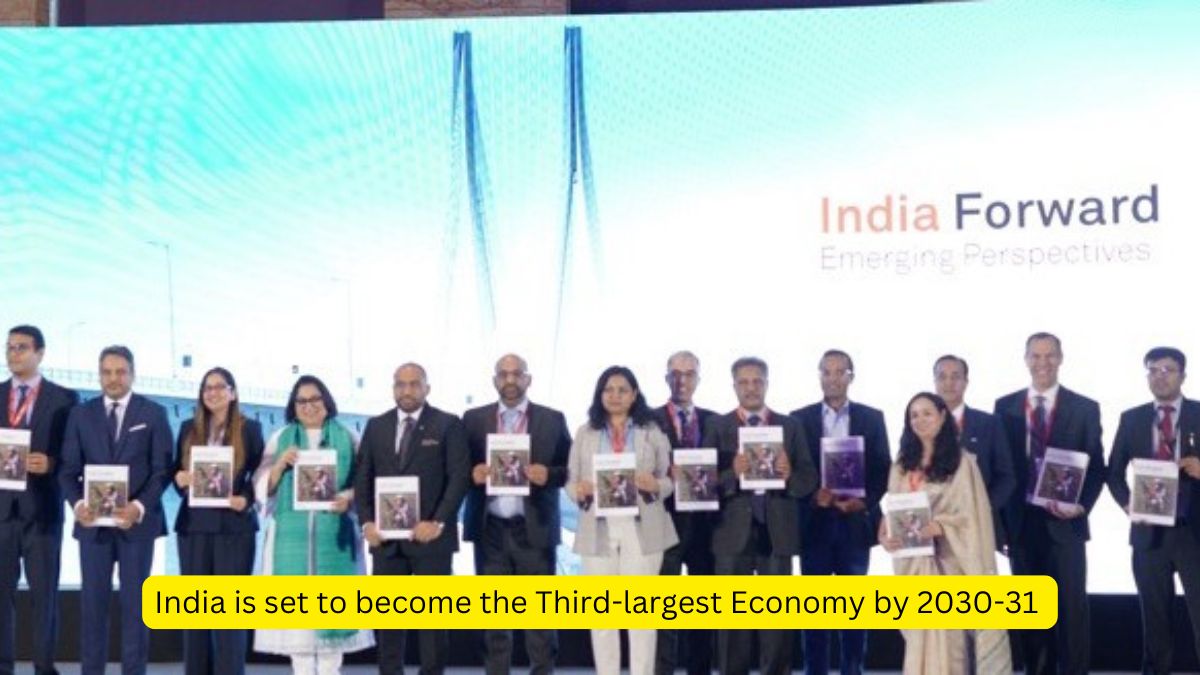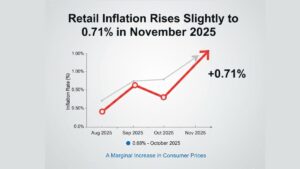India is on track to become the third largest economy by fiscal 2030-31, driven by a robust projected annual growth rate of 6.7%, the credit rating agency S&P Global said in its report called India forward Emerging Perspectives.
Factors responsible for becoming the third-largest economy.
1. Strong Growth Momentum
- In the post-pandemic world, India has emerged as the fastest-growing large economy, with healthy medium term prospects.
- In the fiscal year to March 2024, growth surprised on the upside at 8.2%, exceeding the government’s earlier estimate of 7.3%.
- India has consistently experienced the highest private sector PMI (Purchasing Managers Index) output expansion worldwide over the past year.
2. Budget Impact
- The Union Budget 2024–25, presented July 23, maintained India’s infrastructure buildout momentum, with capex budgeted to grow 17.1% in the current fiscal year.
- Additionally, reduction of import duties on critical minerals and raw materials should improve domestic value addition and may help private investments.
3. India’s rising contribution to global growth
- According to S&P Global Market Intelligence projections, the size of the country’s nominal GDP would nearly double to over US$7 trillion by fiscal 2030–31 from US$3.6 trillion in fiscal 2023–24.
- This would make India the third-largest economy in the world, raising its share in global GDP from 3.6% to 4.5% and lifting its per-capita income to the upper-middle-income group.
4. External Buffers for future uncertainties
- India’s share in world real GDP will rise from 3.6% in 2023 to 4.5% in 2030.
- Robust buffers against external headwinds Strong external buffers are crucial in the face of growing global risks stemming from geopolitical uncertainties and trade disputes.
- India’s external buffers are resilient compared with those of other nations, thanks to the country’s sharply narrowed current account deficit (0.7% of GDP in fiscal 2023–24 against 2.0% of GDP in fiscal 2022–23), strong foreign exchange reserves of over US$650 billion and ongoing fiscal consolidation.
5. Capital Inflows
- The recent inclusion of India’s bonds on global bond indexes should support capital inflows into the economy’s financial markets.
- With the inclusion, gross portfolio inflows are estimated to be between US$20 billion and US$30 billion over the next two years, which is marginal compared with the size of the overall bond market.
7 decisions drive for India’s energy transition for future rise in economy
- 1) Make the radical choice of gas in power mix
- 2) Advance critical mineral security
- 3) Accelerate power sector reforms
- 4) Boost energy efficiency and productivity
- 5) Build strong clean energy supply chains
- 6) Mobilize green finance
- 7) Drive innovation and technology development
Future AI Ambitions Help Economy
The Indian AI market is expected to grow to between US$17 billion and US$22 billion by 2027, attracting investments of US$4 billion and becoming the third-largest talent base with an expected 1.25 million to 1.35 million people with AI skills.




 India’s Forex Reserves Rise by $1.68 Bil...
India’s Forex Reserves Rise by $1.68 Bil...
 India’s Net Direct Tax Collections Rise ...
India’s Net Direct Tax Collections Rise ...
 Retail Inflation Rises Slightly to 0.71%...
Retail Inflation Rises Slightly to 0.71%...







